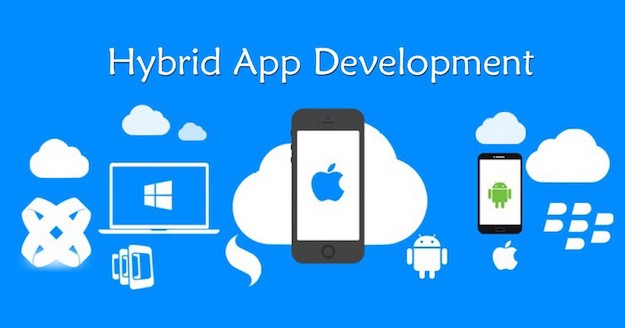On a certain stage of existence, any reputable business or company comes to the idea of building a mobile app. This way usually yields convincing dividends like customer growth or loyalty rate expansion. At the same time, the process of creation of the mobile product is thorny enough and involves different stumble rocks amid which selecting a development approach is the principal one.
Engineers has got an opportunity to build hybrid apps, websites wrapped in the WebView, with the rise of the dedicated frameworks like PhoneGap and Ionic. These tools allow creating apps for several platforms faster and cheaper compared to native technologies. Nevertheless, this sort of apps is known for specific limitations like poor performance or suboptimal UX. Nevertheless, some of them are nothing more than a myth. Let’s figure out the five facts that are fallacies and not worth being believed in.
Twofold faster pipeline
It is a fact that a hybrid framework allows you to build a single app instead of two or more native ones. In this respect, many people suggest that the development time is calculated correspondingly – one to two. In fact, that would be terrific, and numerous mobile app building companies including Railsware would have been engaged in building this sort of apps. But it is not as simple as it seems.
The app creation begins with writing a codebase for one platform first. As a rule, iOS requires fewer time expenses for that. Nevertheless, an engineer has to tinker around with views and functionalities. When it’s done, the adaptation to another platform goes next. And, in most cases, the ready-made app for iOS does not look and behave well on Android. This may be caused by versatile reasons including different screen sizes, browser engines, and a bunch of other stuff that can potentially break the layout. Even the special plugins available within the chosen framework may not work the same on both platforms. All that eats up the time, and the twofold faster pipeline compared to the native approach is not achievable. Still, experience shows that spending 20% less time for a hybrid app is an optimal outcome.
Native look and feel is not a hybrid app’s prerogative
Some professionals insist that opting for a native technology like Java or Objective-C is the only way to build a real native mobile product. At the same time, such frameworks as React Native and Ionic are based on web technology – JavaScript, but they are meant for building apps with a native UX and view. Where is the truth?
Let’s take a look at some examples of apps built with the nonnative technologies. For example, Pacifica by Ionic or Tripcase by former PhoneGap are difficult to be recognized as hybrids. They have a great cover and functionality, while the stuffing remains enshrouded for the end user. At the same time, there are plenty of examples where a hybrid app is not a whit similar to a native product, and that’s not the fault of the technology or approach. A good developer can make a decent app even with a hammer and chisel. It is a joke, of course, but there is a shard of truth in every joke.
Old device = terrible app’s performance
There is an assumption that owners of old versions of their gadgets won’t be able to enjoy the app’s performance and will suffer from hang-ups. In fact, it may happen to be in a particular case. iPhoners may breath out since this issue has nothing in common with iOS. Even the old versions can run the app due to a very good browser engine.
Androiders should be less optimistic because the versions below 4.4 suffer from a bad browser engine meaning a hybrid app can hang up. At the same time, the devices having newer versions of this OS have all the capabilities to let the users enjoy a full app’s performance.
Hybrid means unsafe
We don’t know whose brilliant mind this absurd thought came to, but the myth that hybrid apps are less safe than native ones does exist. A probable trigger for that is the use of the WebView, as well as JavaScript, which is deemed easy to hack.
Once a reputable engineer said that the safety of software depends on the quality of code you write. Indeed, the security level of a native or hybrid product won’t differ if a user does not violate the common safety rules like avoiding storing passwords in clear text on the device. As for the WebView, it’s just a container that performs some JS stuff. Native apps have their own native containers as well. So, this myth is farfetched.
Hybrid approach is a cure-all solution
The last myth on our list but not least, in general, is that going hybrid is the way to solve all problems associated with any endeavor like the shortage of funds, time, engineers, etc. Actually, it can be a great solution for particular projects, but it doesn’t guarantee a smooth and seamless pipeline. It’s not enough to build once and enjoy the app working everywhere, while the truth is that you’ll have to optimize it everywhere, which sometimes requires more efforts than one would have spent on building a native product.

